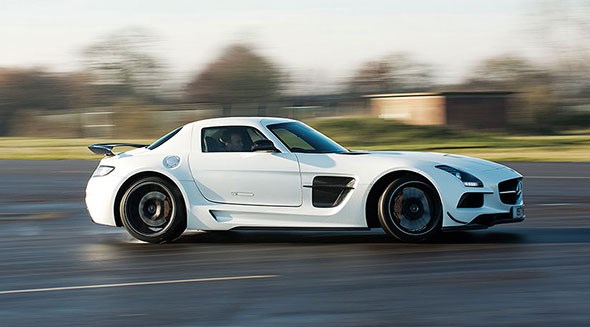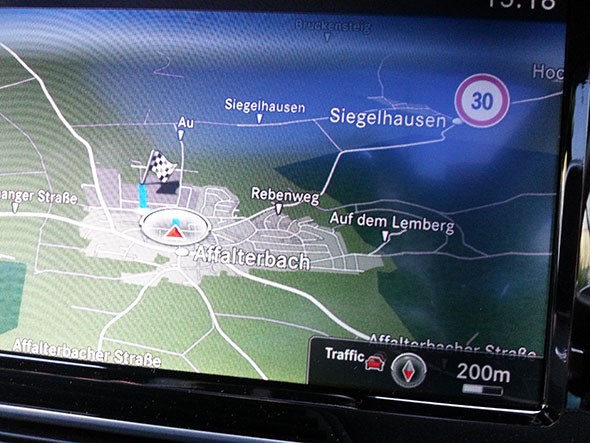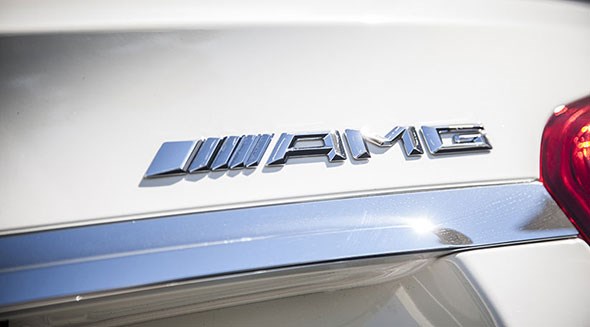Tonight Mercedes-AMG unveils the new AMG GT sports car – only the second pure-bred AMG machine in the brand’s history. It’s the successor to the gullwing-doored SLS and the car that Daimler hopes will finally present a credible alternative to the all-conquering Porsche 911.
As you read this, we’re driving to the AMG GT launch in Affalterbach in Germany – in a convoy of modern-day AMGs. It’s the perfect excuse to ask: what makes a modern AMG?
AMG: a quick history
Mercedes’ go-faster division dates all the way back to 1967 when Hans Werner Aufrect and Erhard Melcher founded the company to build Mercedes racing engines. Over time, a reputation for producing outrageously powerful road cars of uncompromising quality brought them into the bosom of Mercedes proper.
You could buy an AMG in a Mercedes dealership in 1993, then in 1999 the three-pointed star acquired a 51% stake in the firm. Mercedes acquired the rest of the shares in 2005, and AMG finally became the in-house tuning arm we know today.
Along the way AMG has worked with McLaren to produce Mercedes’ first modern supercar, the SLR; designed and produced its own range of exclusive engines – which are still built using the one-man, one-engine principle; and undergone the inevitable brand dilution that comes with the irresitable marketing presence of such a powerful image. If you want AMG wheels and badges on your C180, sir, you may have them…
Yet it’s also responsible for the superlative SLS gullwing, the car that lends the basis of its platform to the new AMG GT, and created an extraordinary selection of halo products for the rest of the Mercedes range. From a 355bhp hot hatch to 630bhp luxury limos, it seems AMG is happy to oblige with mischievous enthusiasm.
In an automotive world increasingly slave to political correctness – how else do you explain BMW M Division’s synthetic sound effects? – AMG remains reassuringly easy to love. But it isn’t perfect.
AMG in 2014: what does AMG stand for?
As we drive to the GT world debut in Affalterbach, it’s a great chance to reappraise the modern AMG range. Not one of the cars in our convoy from the UK to Germany is a saloon (a telling detail):
A45 AMG
GLA45 AMG
C63 Coupe Black Series
S63 AMG Coupe
SLS Black Series
Driving that little lot gave us plenty of opportunity to assess what AMG stands for. It’s no longer just fast four-doors – but a sprawling range of everything from superminis to 4x4s. Even 6x6s, come to think of it…
AMGs are still power-crazed
Outrageous power remains at the heart of every AMG product. The A45 AMG pocket rocket is proof of that. With 355bhp from its turbocharged 2.0-litre four-cylinder, it’s hair-raisingly fast. Might be a bit numb for our tastes, but it’s a compellingly outrageous package in some regards. And of course the more senior S63 AMG Coupe adds another couple of hundred ponies for a giddy 577bhp. Make no mistake. Monster power outputs will always be associated with AMG.

AMGs are born to fly on the autobahn
Our route from the Midlands via the Eurotunnel, heading north through Belgium and now on the A6 – away from French officious police as swiftlty as possible – is perfect AMG territory. We’ve not been v-maxing these cars; I’ve topped out at 269kmh, or 167mph, so far. But it’s the way they feel so planted at these speeds. And you can join autobahns and pull into the fast lane with impunity. That A4 2.0 TDI on your bumper will be a speck in your rear-view mirror before you know it if you’re piloting a big-cc AMG.
They’ve stretched AMG too far
There’s no easy way of putting this. But the GLA 45 AMG is difficult to accept as an AMG family member. Have they taken AMG too far away from its roots with some of these spin-off models? The go-faster baby SUV is certainly an awkward-looking vehicle – especially when specced in the full aero pack, like the car on this road trip. The spoilers and aero flicks are just trying too hard. I didn’t think it was too bad to drive – but it shows that AMG is in danger of going too brash. Merc should protect its famous performance marque…

AMGs are great everyday companions
One benefit of forced induction is that the new breed of AMGs are acceptably economical on a long road trip. We’ve only stopped once for fuel on our drive to Affalterbach – not bad for cars with upwards of 500bhp in some instances. And these cars are still inherently Mercedes: there’s the quality, the logical, comfy cabins, the cutting-edge tech onboard. They’re very comfy at a long-distance lope – even the SLS Black Series with bucket seats and circuit-tuned suspension is an ace place to while away the miles.
Technology risks ruining some AMG qualities
These AMGs in our convoy are – to a car – rapid, refined, slightly outrageous in a slick-suited way. (Well, apart from the OTT GLA 45 AMG). But we hope the creep of technology doesn’t dilute the core AMG DNA. Take the S63 AMG. Its tilt-corner suspension system is actually engineered to help the passengers, not the driver. On an AMG. It’s clever tech, though, and I’m adapting to it as we thunder along the A6 autobahn: it’s a little disconcerting and corrupts the steering feel. And those turbo engines – while they sound good for blown motors – can’t match the visceral violence of the SLS Black Series. Having the hardest Gullwing on our trip is a reminder that the analogue AMGs are perhaps still our favourites. Here’s hoping the new GT we see tonight retains some of the rawness that marks out the best AMGs.
>> Read our onboard first riding impressions of the Mercedes GT
